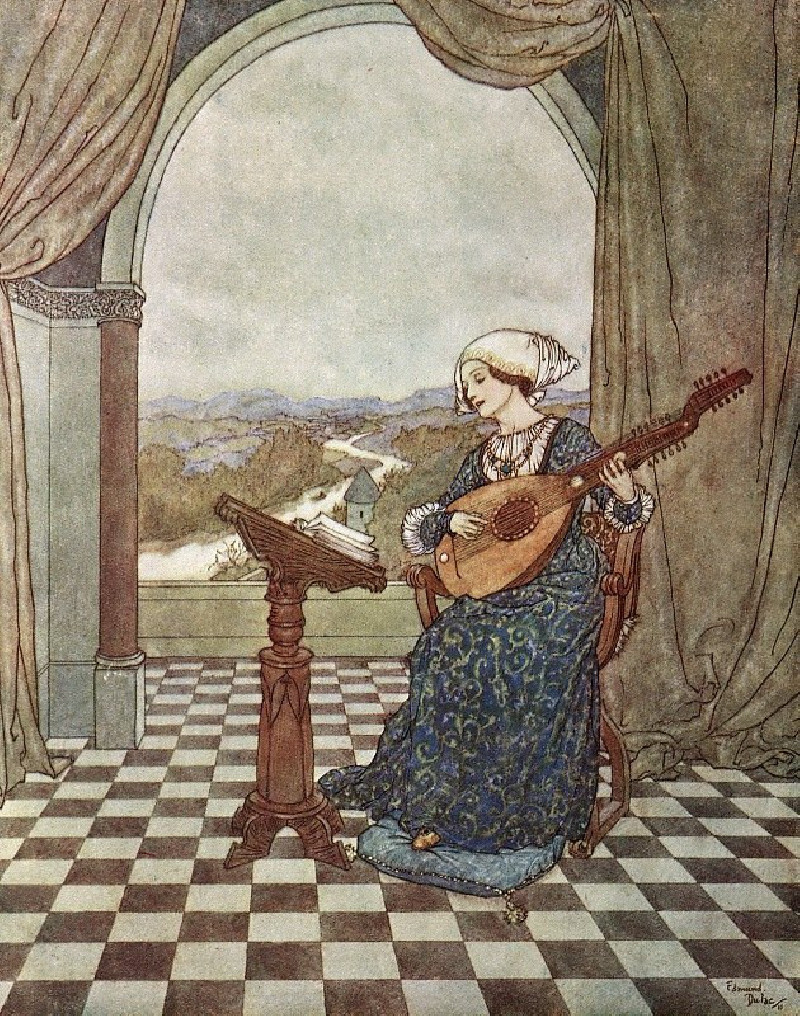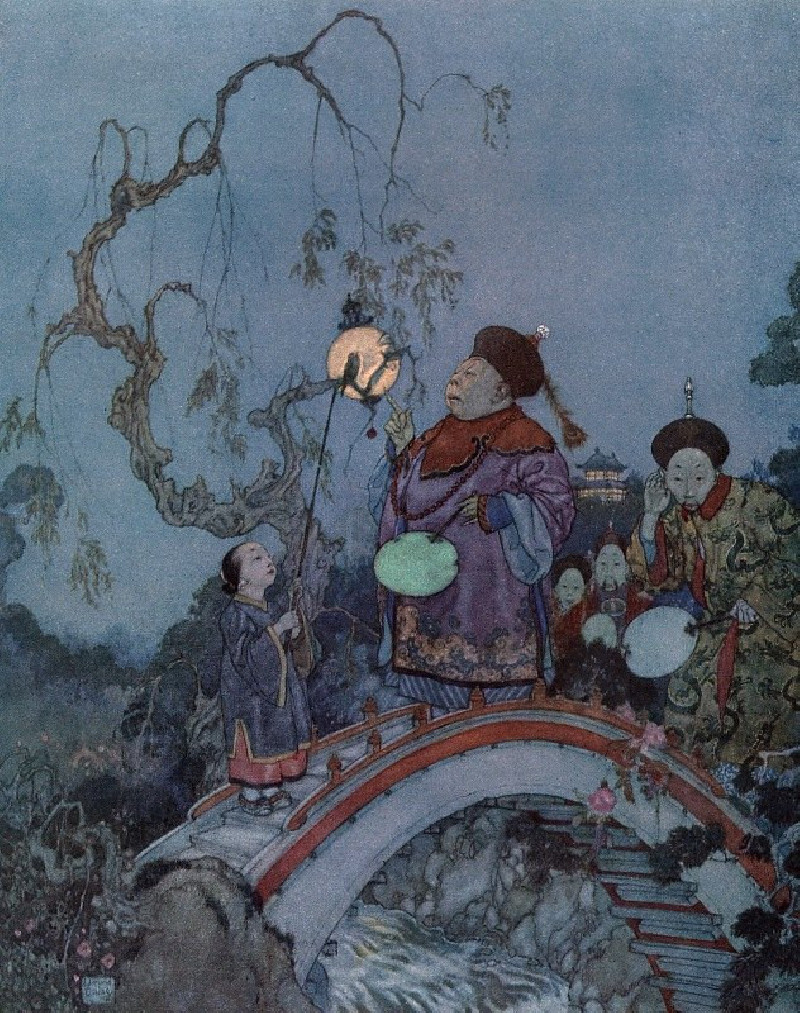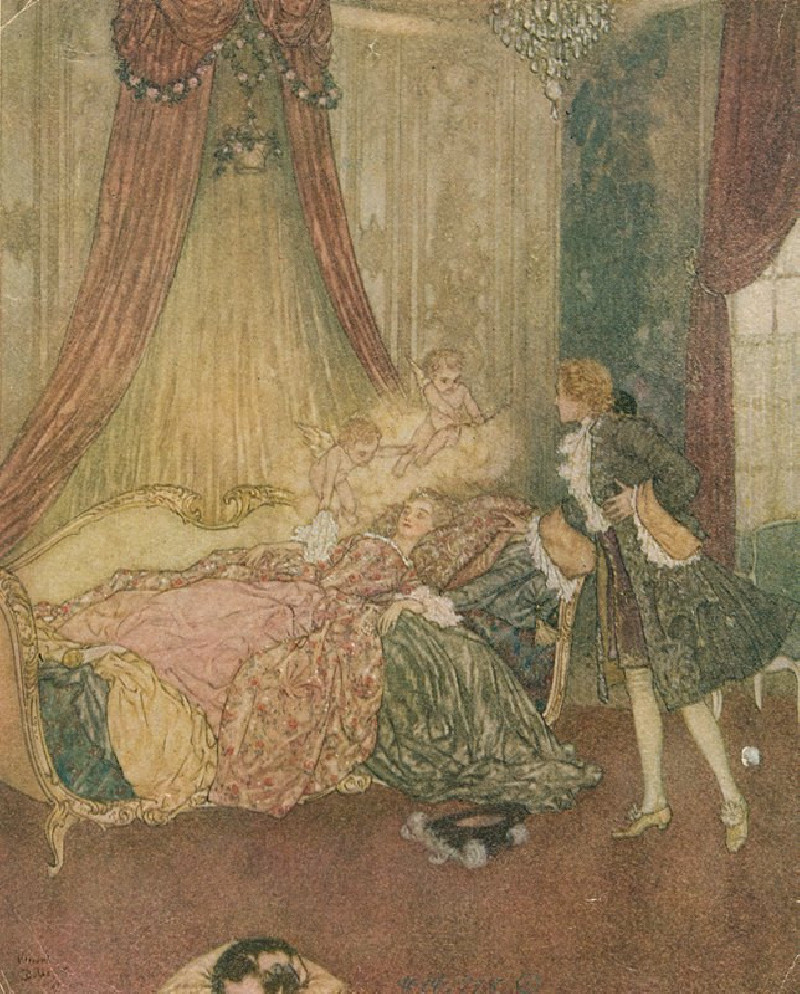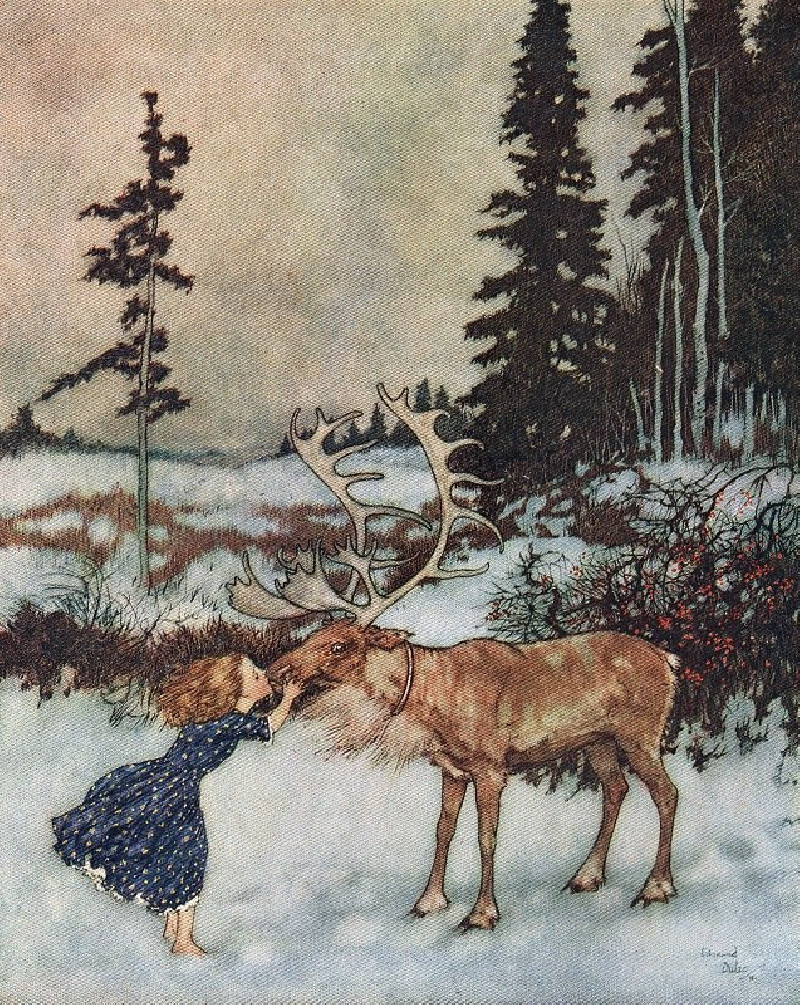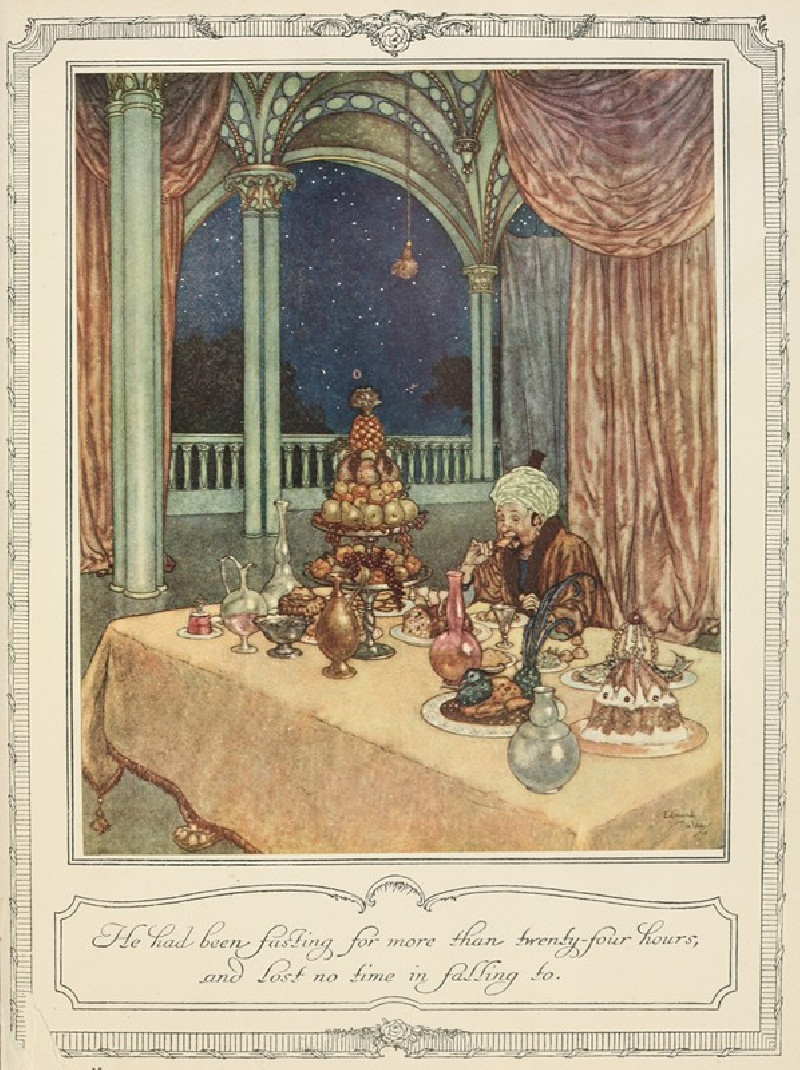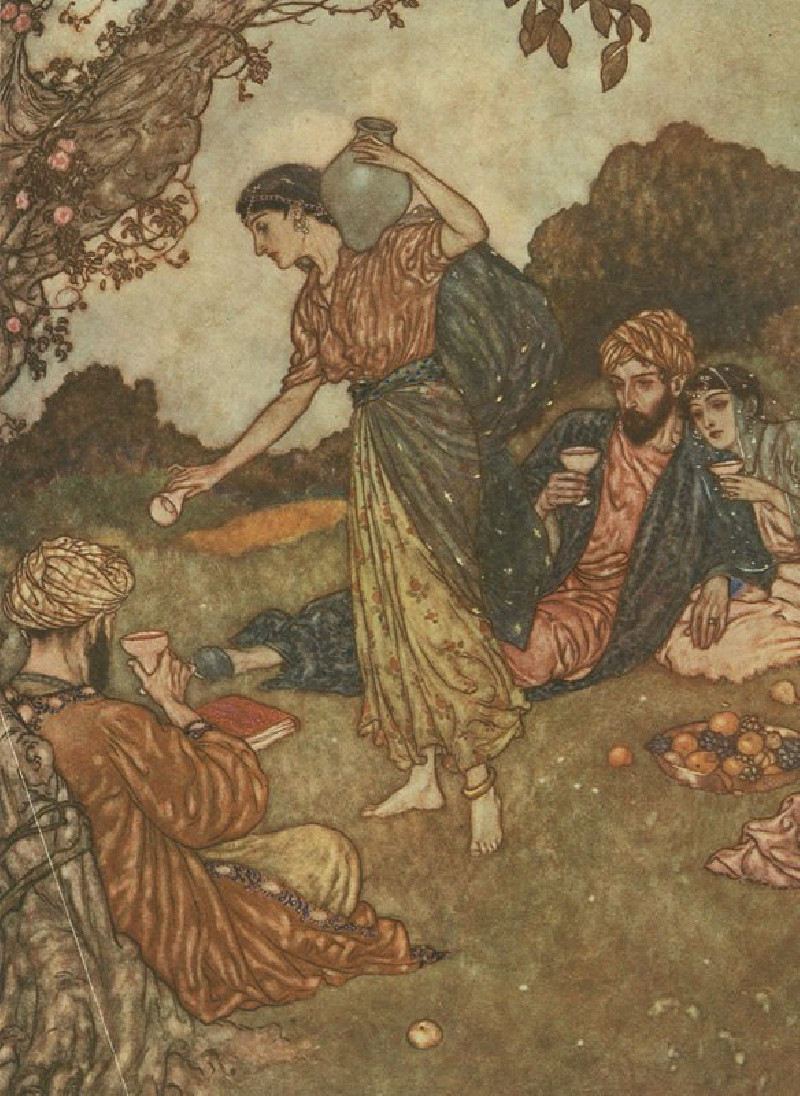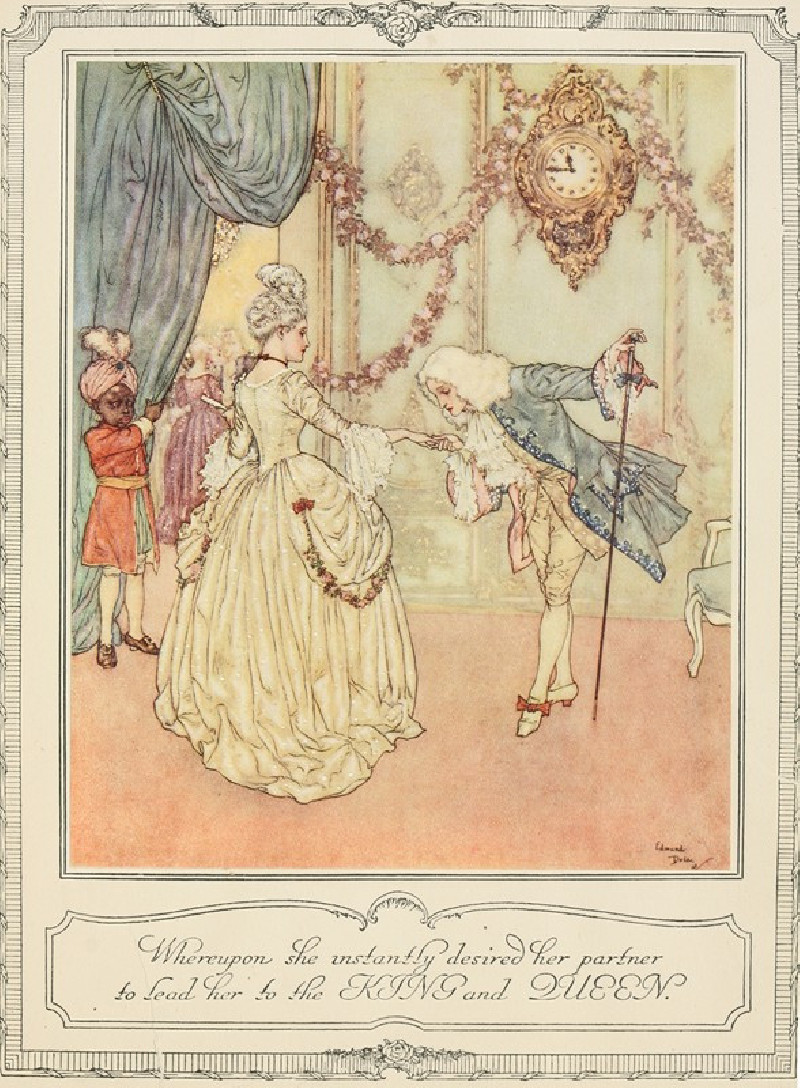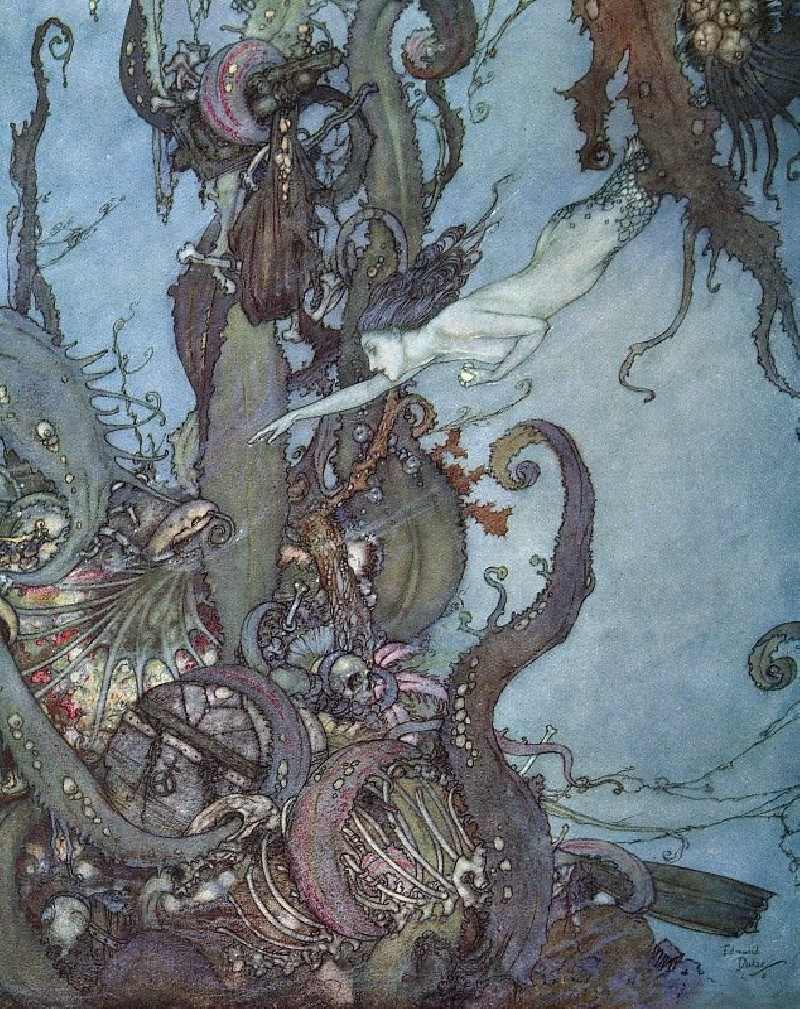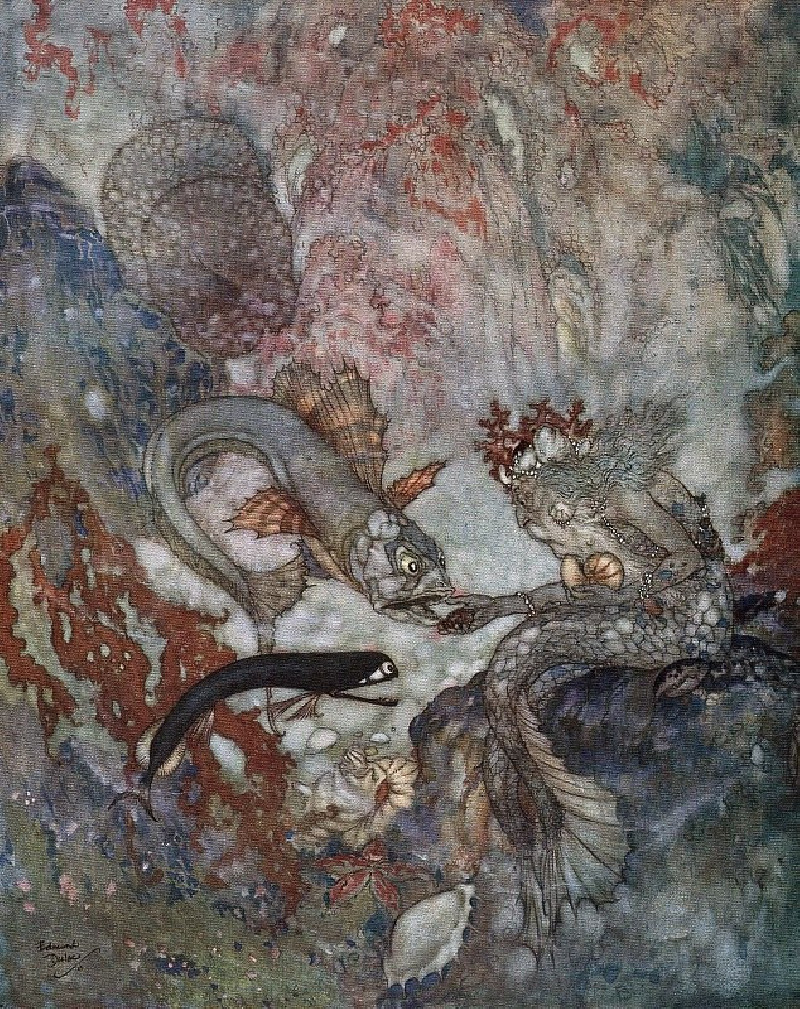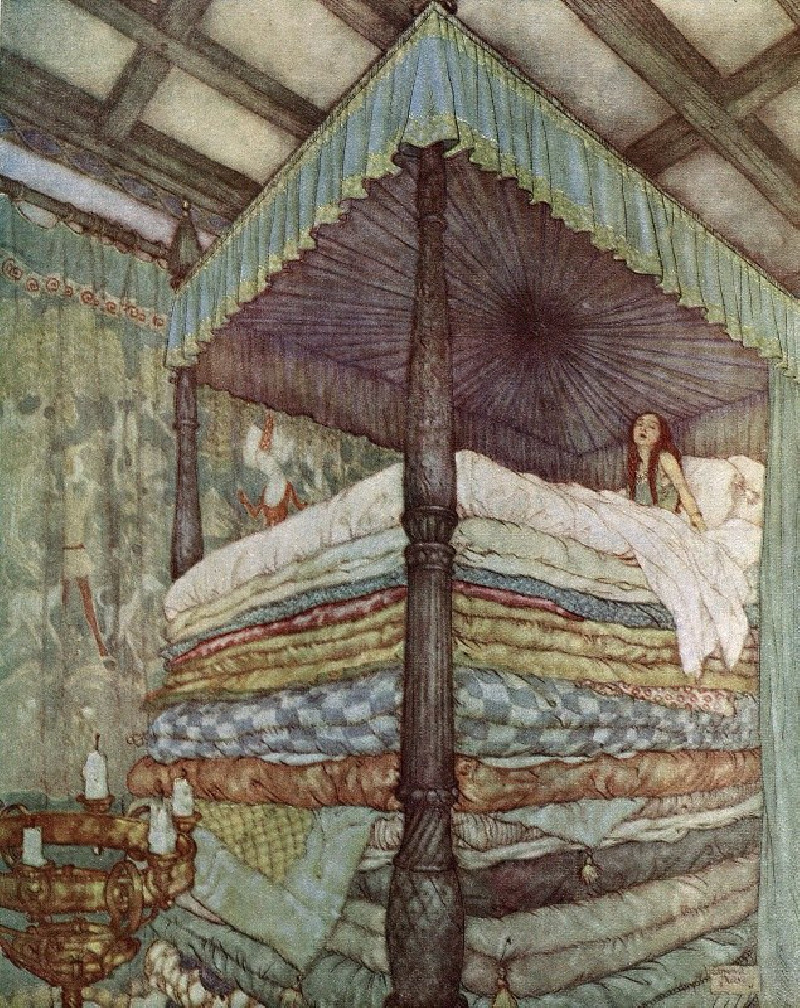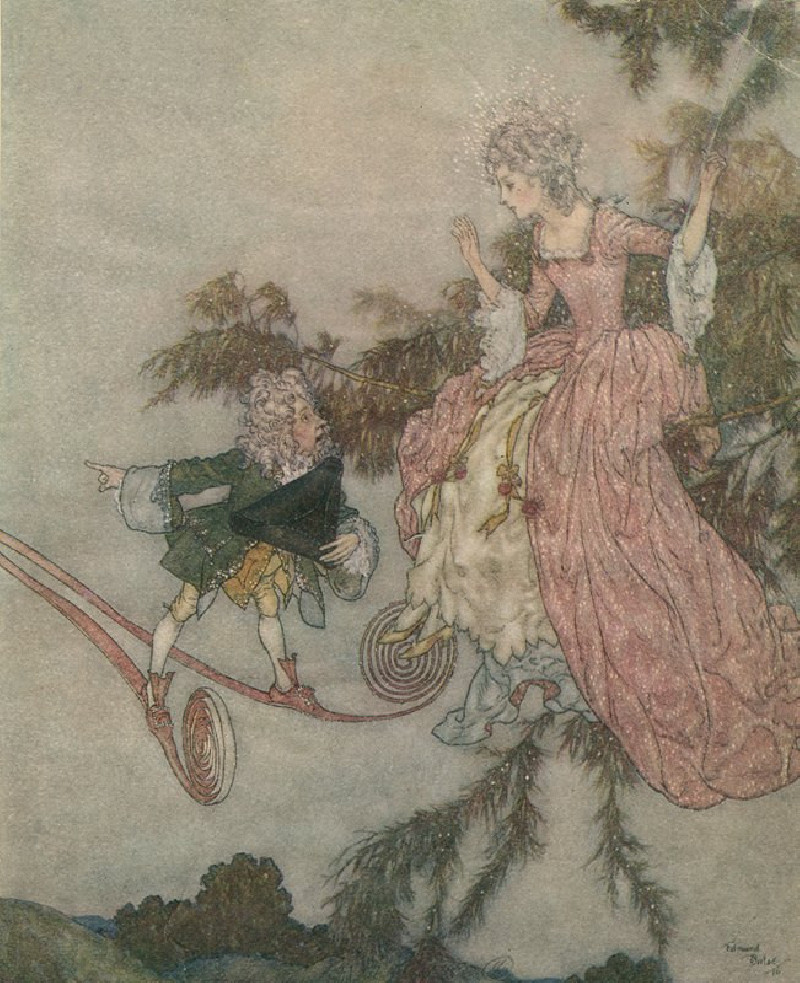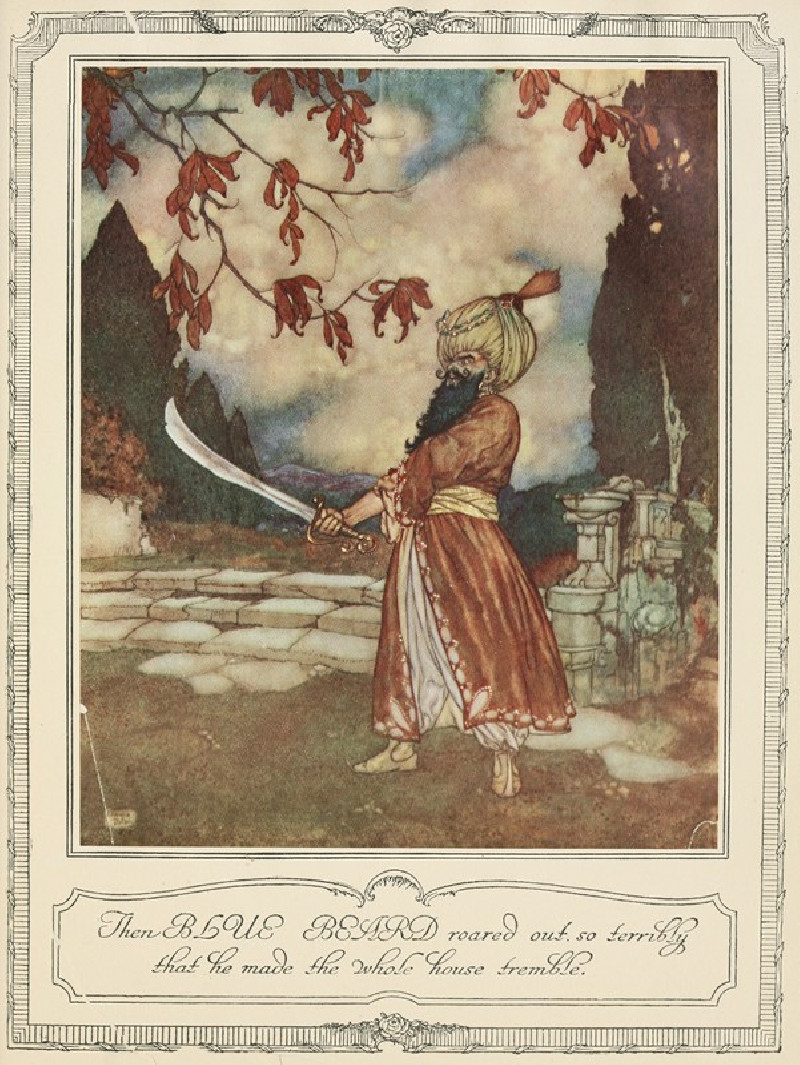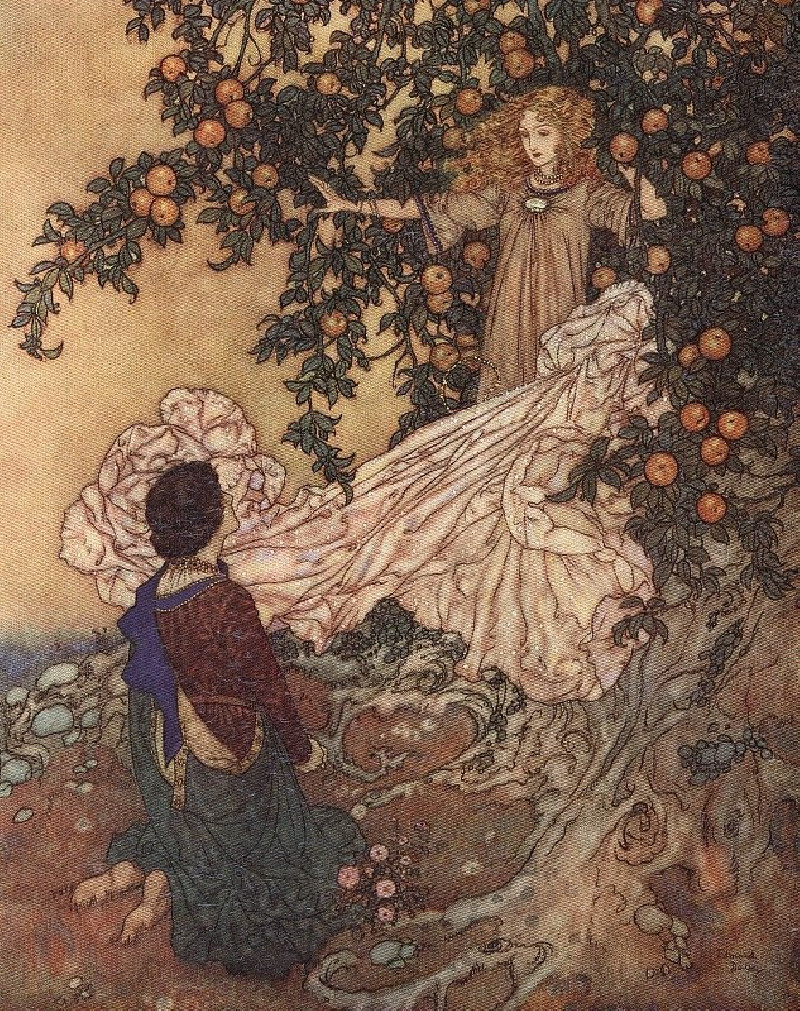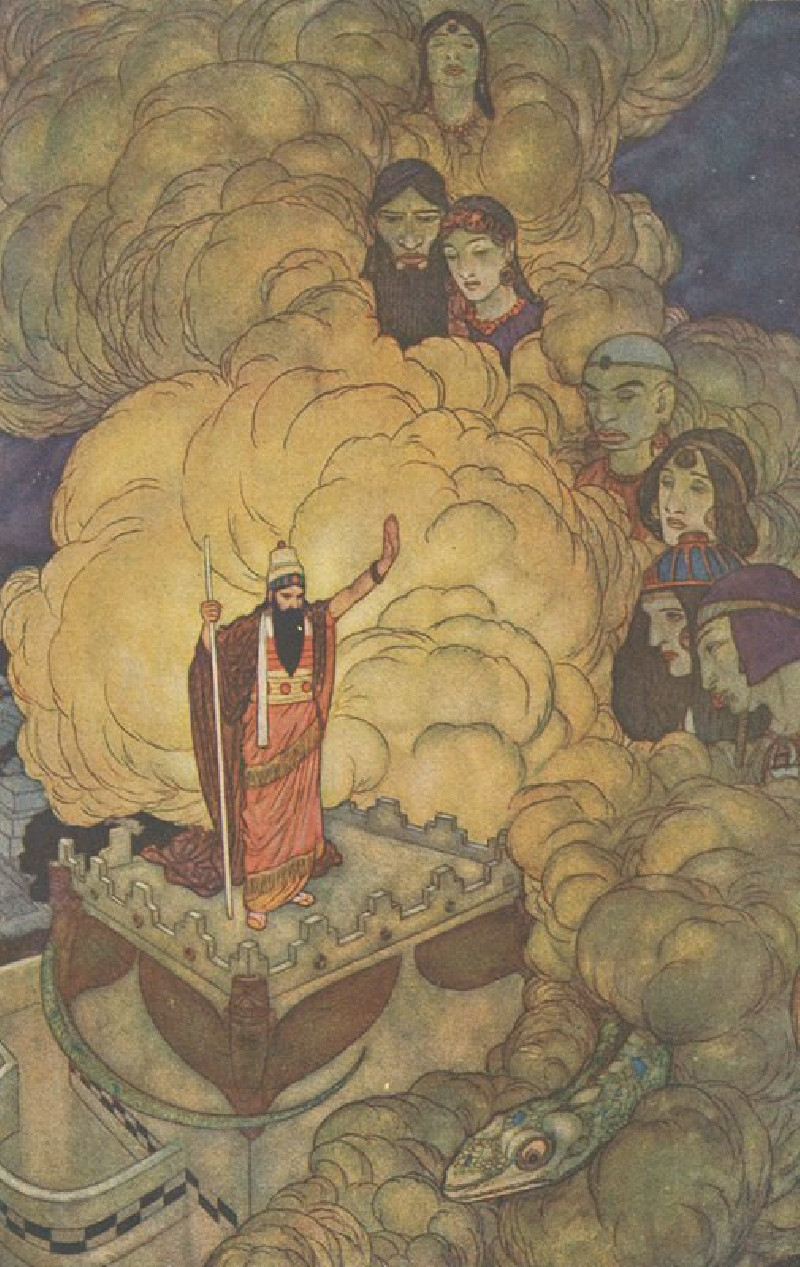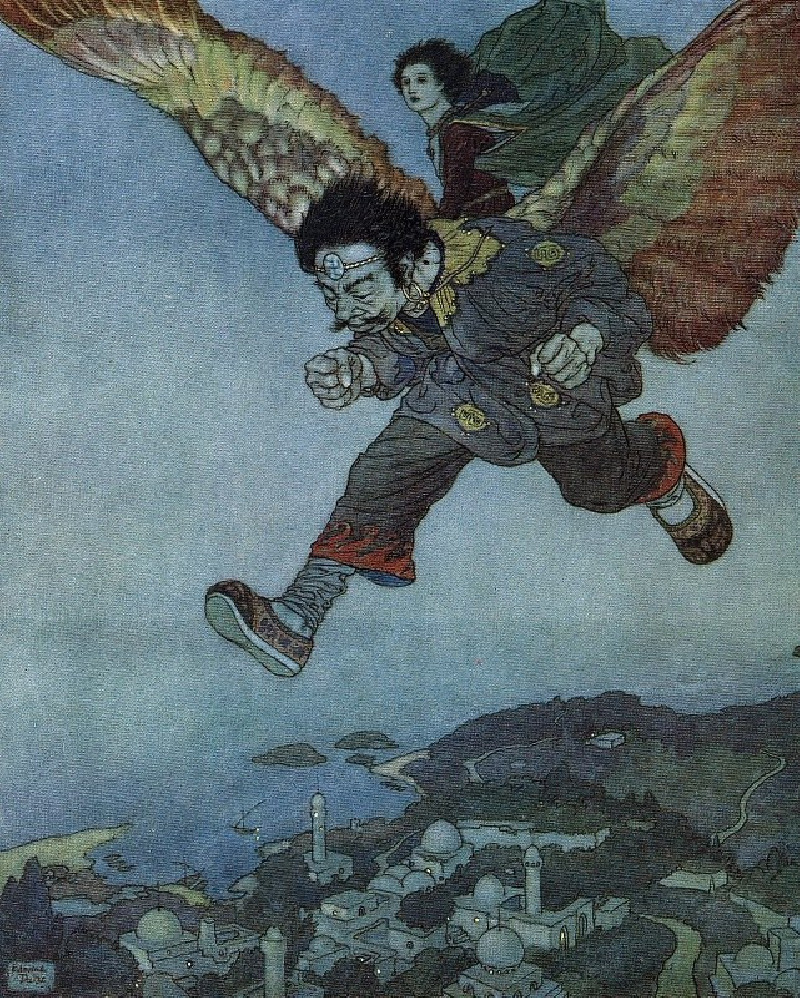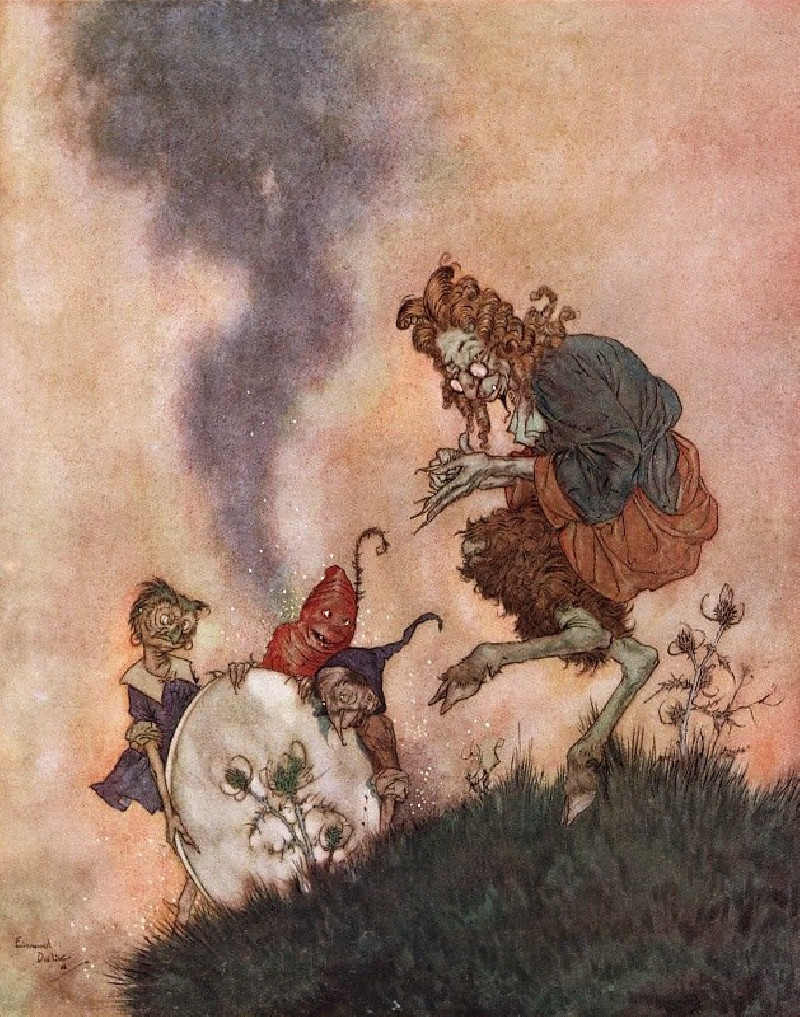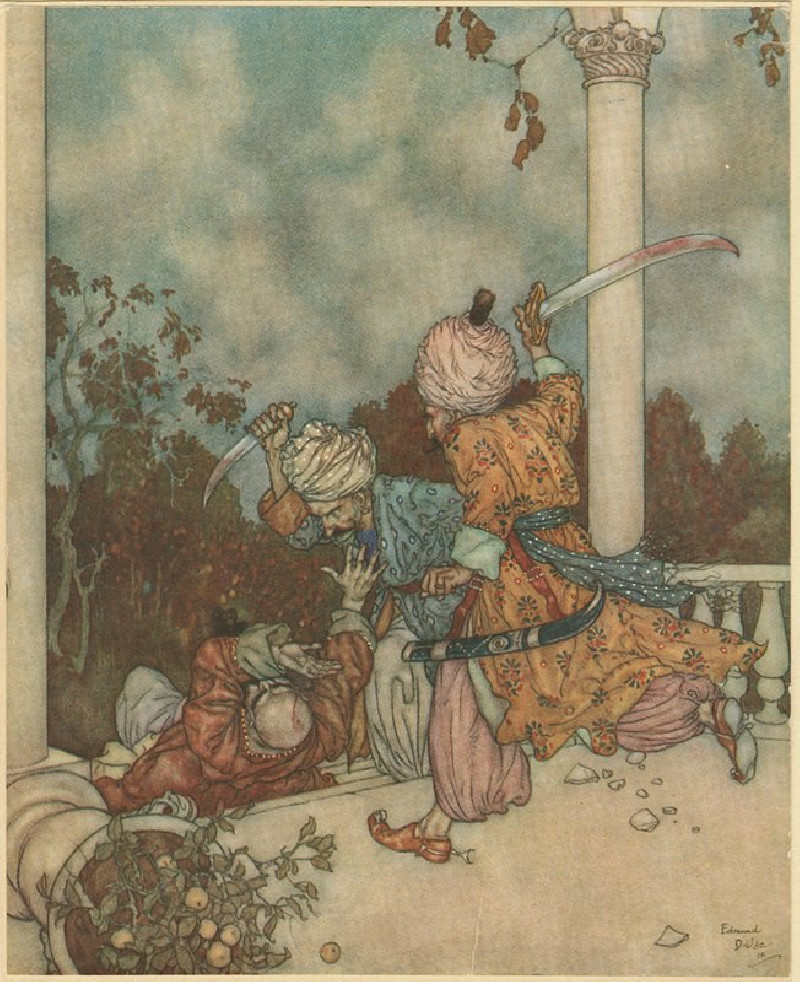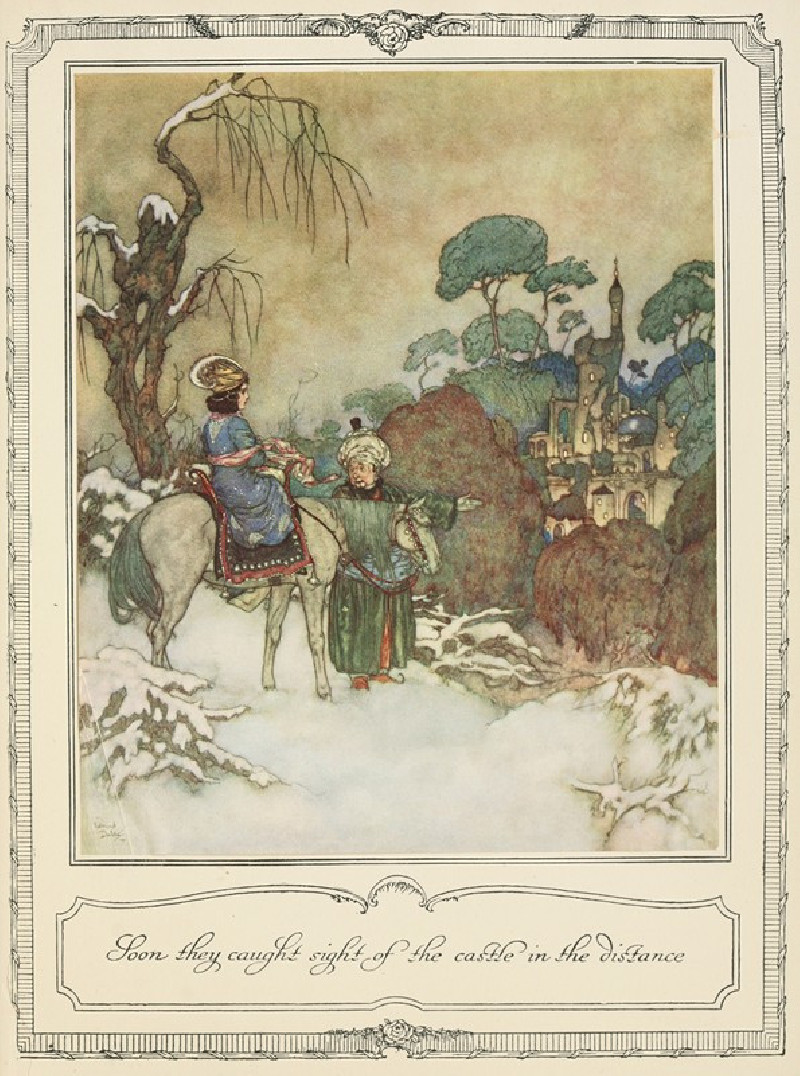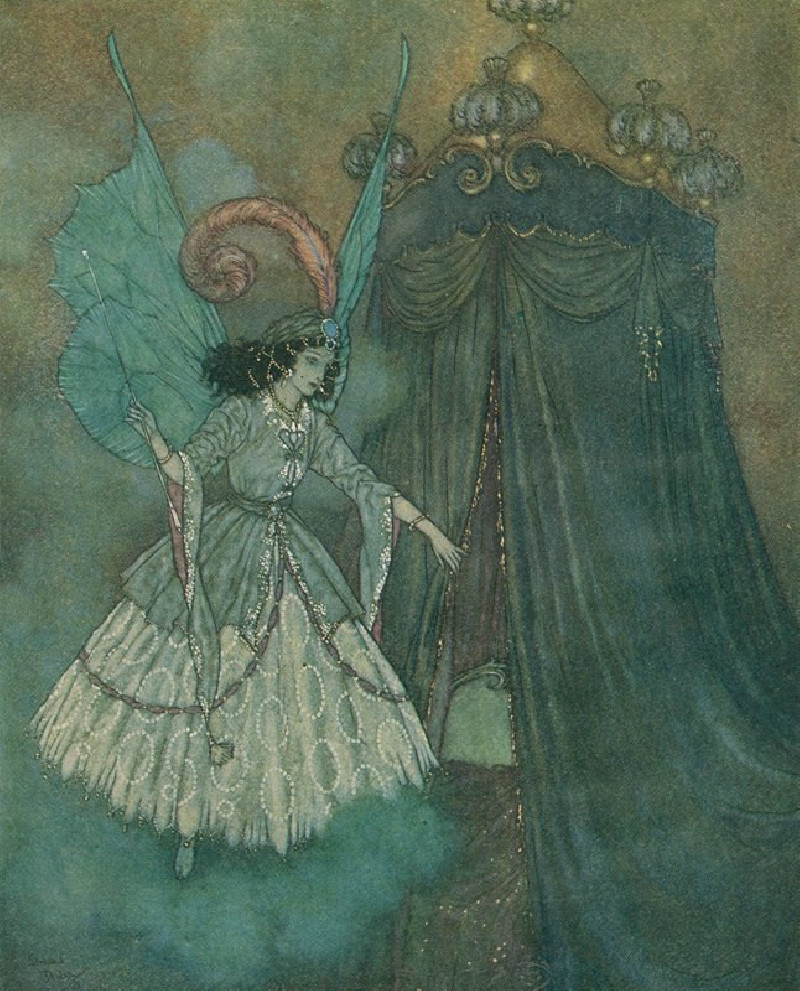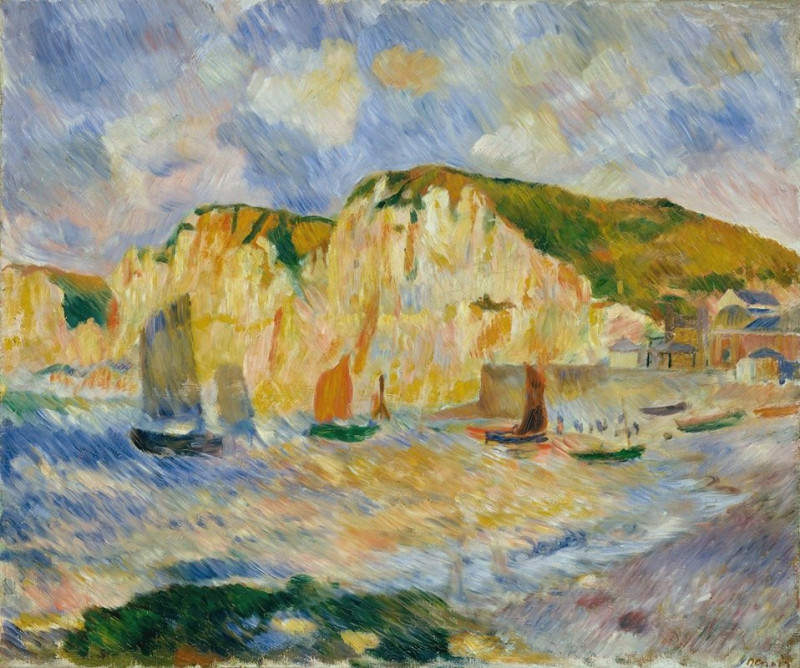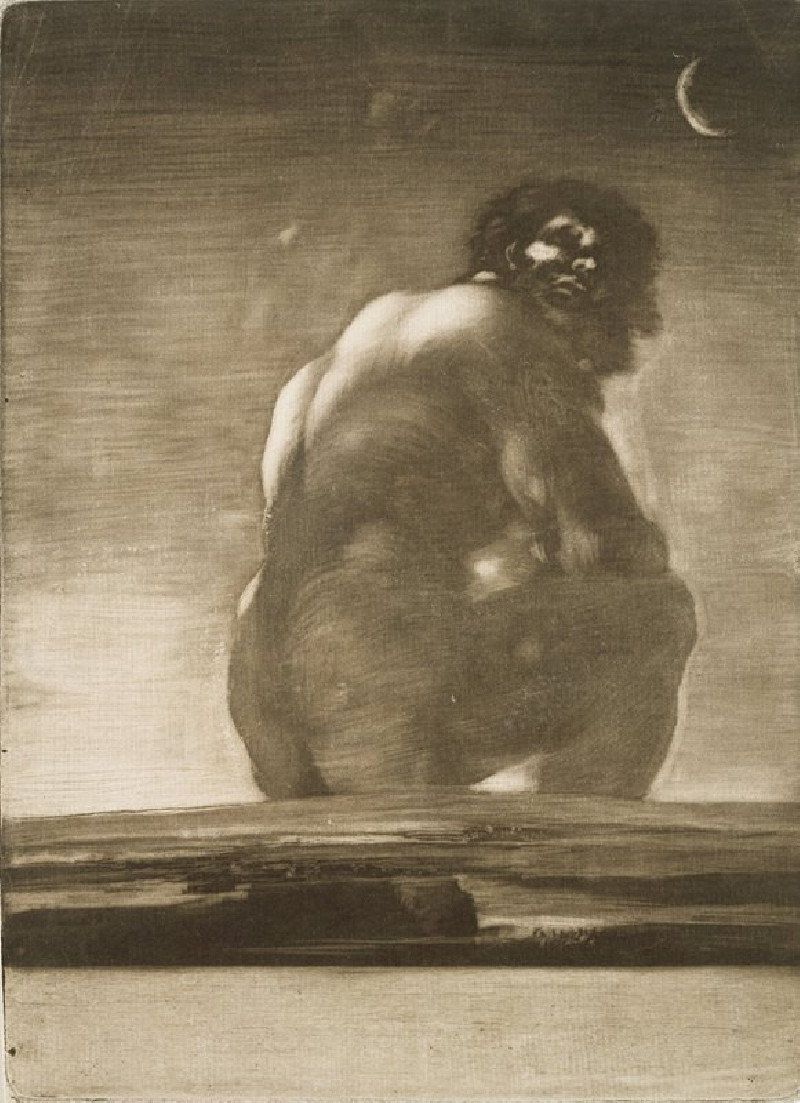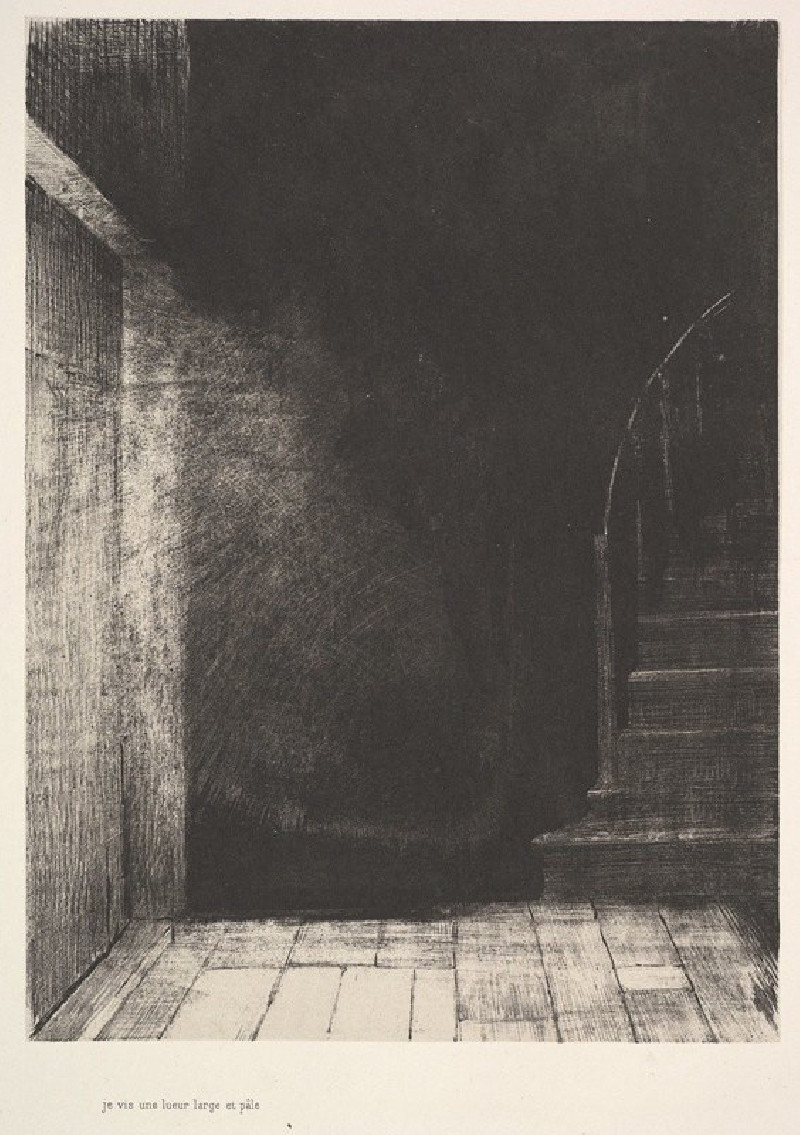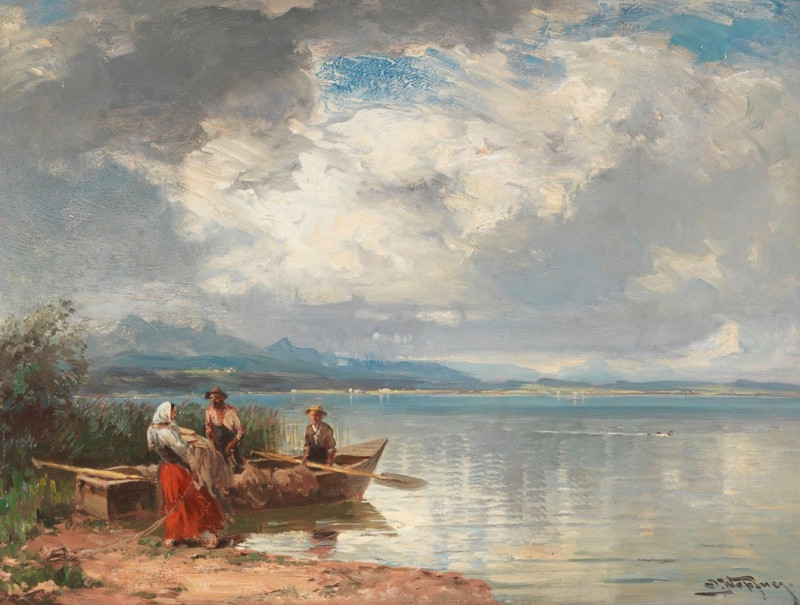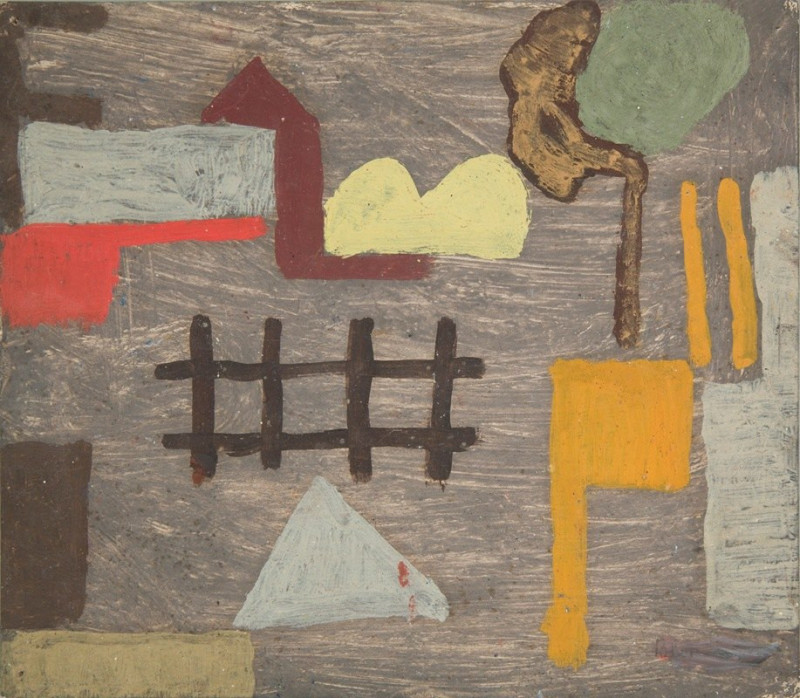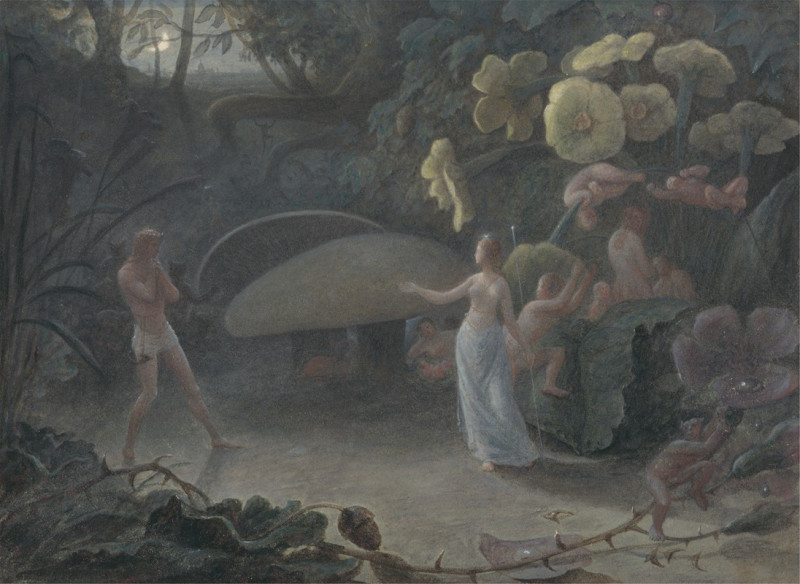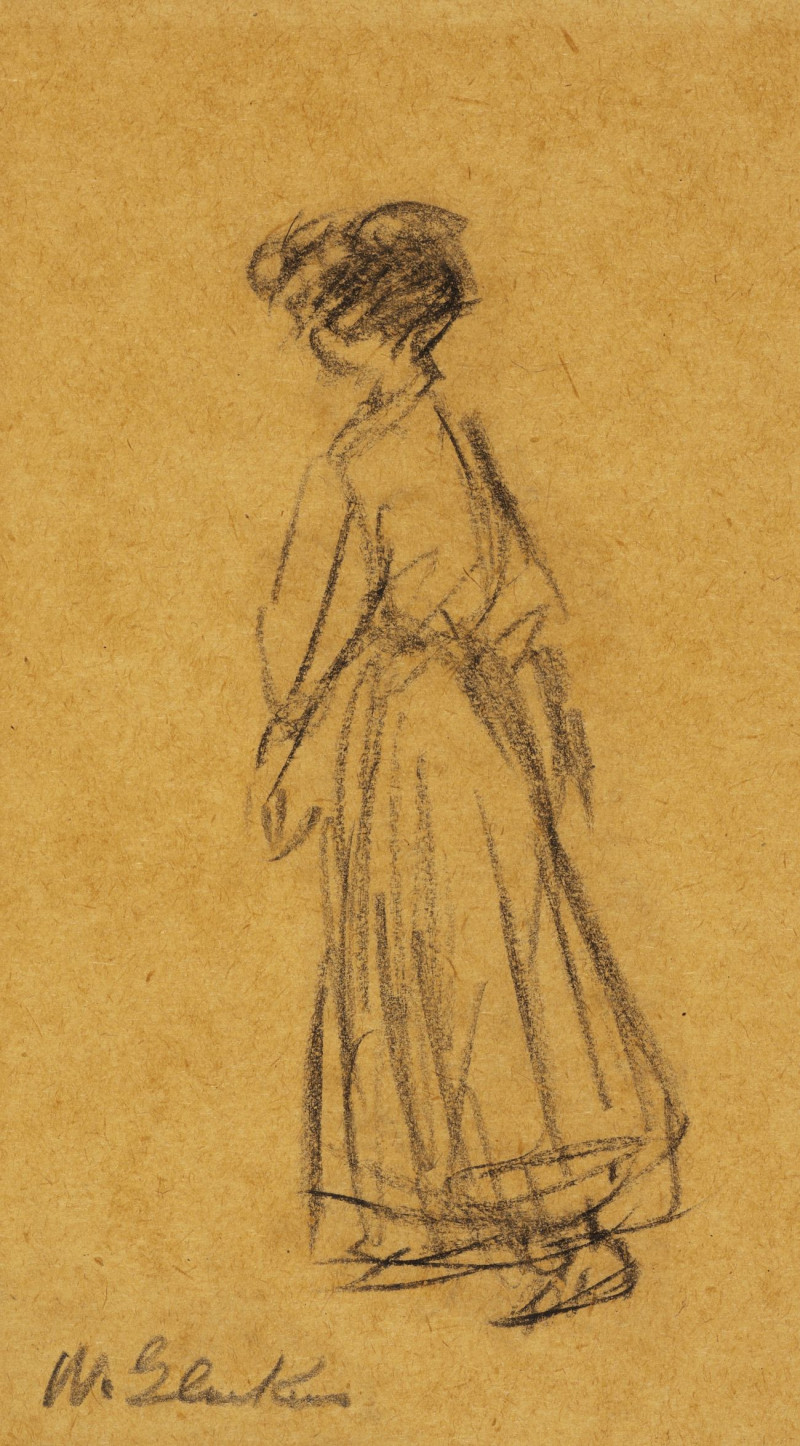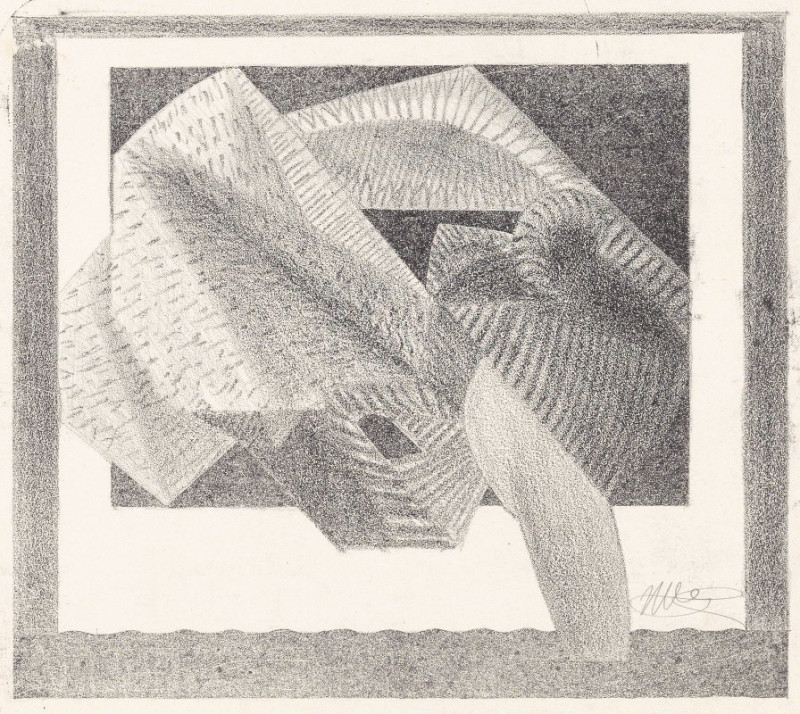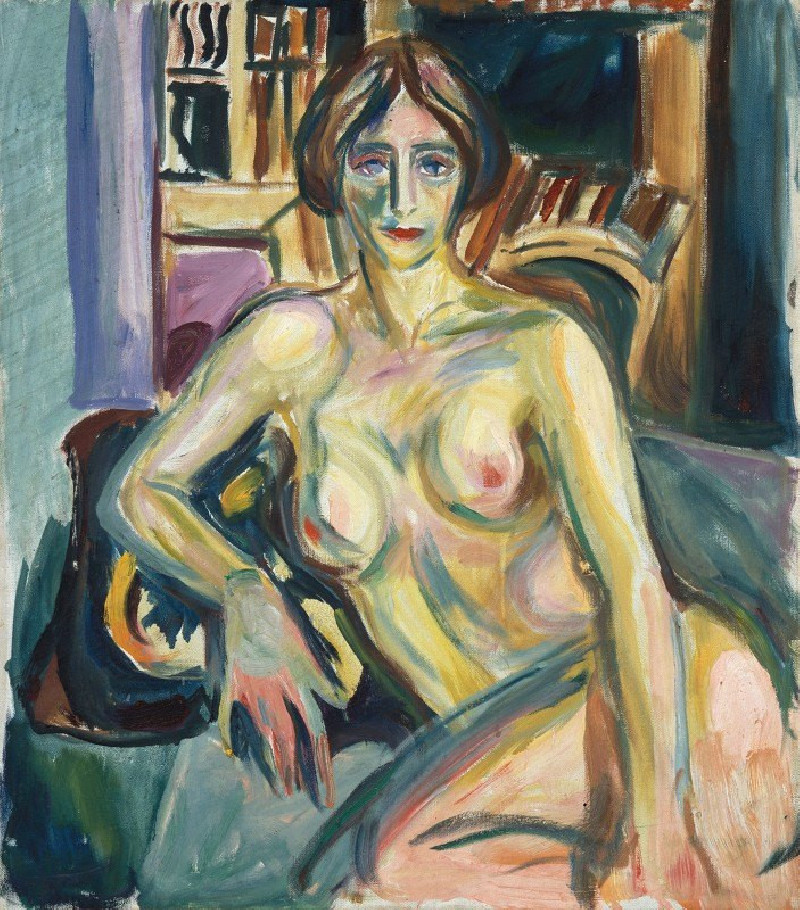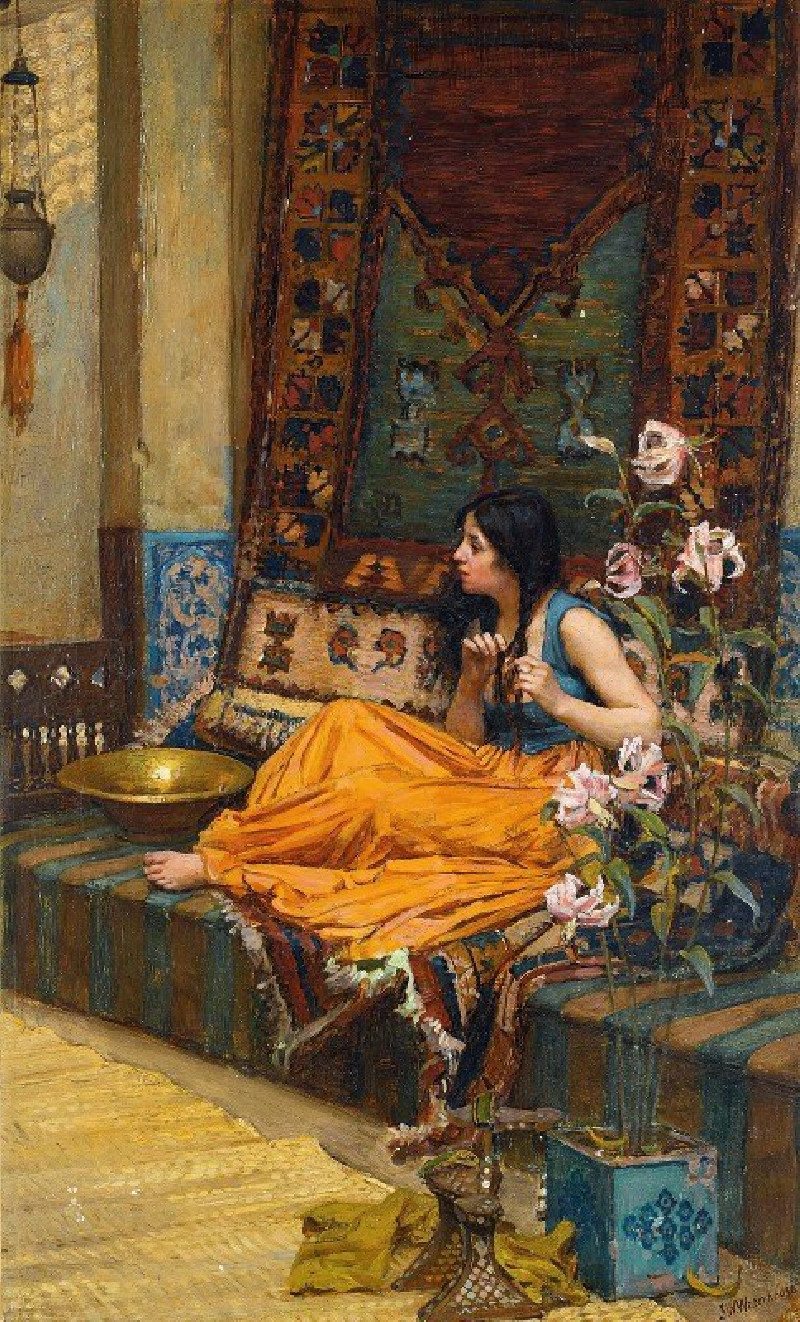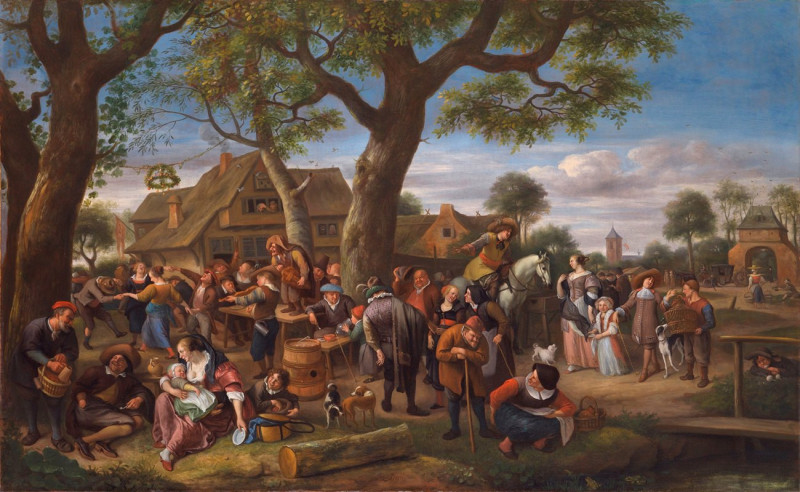The Wind’s Tale Pl 1 (1911)
Technique: Giclée quality print
Recommended by our customers
More about this artwork
Welcome to a delightful journey into the whimsical and enchanting world of Edmund Dulac, showcased in his illustrious work "The Wind’s Tale Pl 1." Created in 1911, this painting is a splendid example of Dulac's prowess in blending storytelling with artistry, capturing the essence of romanticism and fantasy all at once.At the heart of the painting is a serene woman, elegantly robed in a blue gown adorned with intricate patterns that mimic the swirling winds or flowing water, reflecting the tales she conjures through her music. She sits at a window, framed by heavy, flowing drapes that suggest a portal between the internal world of the home and the external world of nature and imagination. This window opens to a picturesque landscape of rolling hills and a distant village, evoking a sense of peaceful isolation.The woman is immersed in playing a lute, with sheets of music propped on a wooden stand before her, indicating her engagement with the creative process. Her gentle demeanor and focused expression suggest a deep connection with the music, which, coupled with the title of the painting, might hint at a narrative inspired by the whispers of the wind—a common theme in folklore where the wind carries stories across the world.This artwork not only showcases Dulac's skill in using soft watercolors to create atmospheric depths and textures but also reflects the period's artistic inclination towards the aesthetic and the fantastical. The detailed patterning, the balanced composition, and the thoughtful interplay of colors and elements make "The Wind’s Tale Pl 1" a captivating piece that invites viewers to listen closely, perhaps to hear the tales the wind has to share.
Delivery
Returns
Edmund Dulac (born Edmond Dulac; 22 October 1882 – 25 May 1953) was a French-British naturalised magazine illustrator, book illustrator and stamp designer. Born in Toulouse he studied law but later turned to the study of art at the École des Beaux-Arts. He moved to London early in the 20th century and in 1905 received his first commission to illustrate the novels of the Brontë Sisters. During World War I, Dulac produced relief books and when after the war the deluxe children's book market shrank he turned to magazine illustrations among other ventures. He designed banknotes during World War II and postage stamps, most notably those that heralded the beginning of Queen Elizabeth II's reign.

